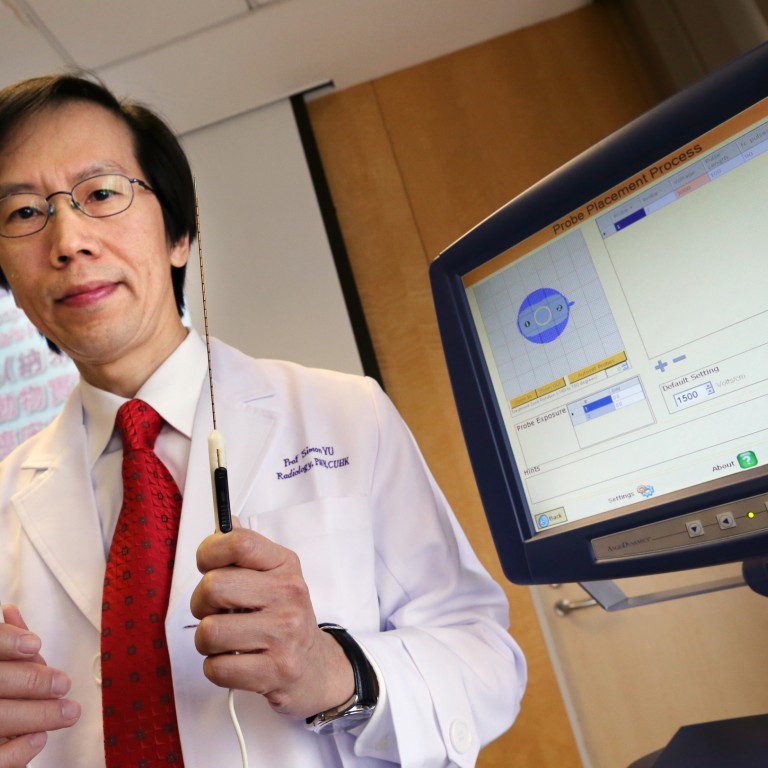
New | First 'NanoKnife' surgery for Hong Kong cancer patient at CUHK
Cutting-edge technology hailed as quick, highly effective and non-invasive
Chinese University doctors have carried out one of the first cancer treatments in Asia to use a cutting-edge technology that employs electricity to kill cancerous cells.
The percutaneous NanoKnife technology was used for the first time in Hong Kong last month on a 67-year-old with liver cancer.
Three electrode needles, each 1mm in diameter, were inserted into the man’s tumour, which was then zapped with 3,000-volt electric pulses for between 20 and 100 microseconds.
The treatment works for solid tumours smaller than 5cm, and the needles are guided by ultrasound and X-ray imaging so that no operation is needed.
Scans showed no lesions after the treatment.
“The treatment needs just an hour and leaves wounds the size of only a needle hole,” Professor Simon Yu Chun-ho, director of the university’s Vascular and Interventional Radiology Foundation Clinical Science Centre, said. “Patients can usually be discharged the day after.”
Yu said the success rate was more than 90 per cent.
Doctors in Taiwan have also used the technology, but they usually insert the needles through operations, he added.
The advantage the NanoKnife has over thermal ablation, which uses heat to destroy cancer cells, is that it does not harm the 8surrounding blood vessels, bile ducts or nerves.
Cancer close to blood vessels also tends to recur after being treated with ablation.
The technology can also be used to treat cancers of the lung, prostate, kidney and pancreas.
“The technological advancements in this field are all moving away from surgery because we hope to minimise the damage to patients and minimise the recovery time,” Yu said.
Earlier this year, the centre also conducted Asia’s first percutaneous NanoKnife research on animals to study the short, medium- and long-term effects of the technology nine live pigs.
“The main threat of the electric pulse is to the heart,” Yu said, adding that patients with healthy hearts were not at risk.
He said treatment using the three-year-old American technology cost HK$50,000 each time, while microwave and radio frequency ablation treatments cost HK$10,000 and HK$6,000 respectively.
